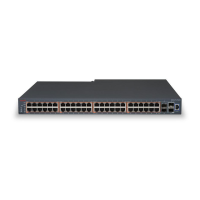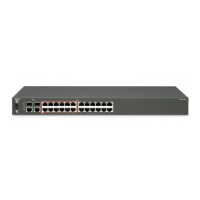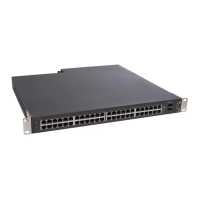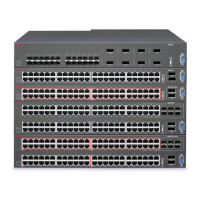Port Redundancy
Issue 1 July 2006 135
LAG Implementation in the C360
This section describes the implementation of the LAG feature in the C360 product family.
● With the C363T and C363T-PWR, you can aggregate the two GBIC ports to form a LAG,
you can aggregate the bandwidths of 3 groups of 10/100BASE-T ports in a LAG, for a
maximum of four LAGs per switch.
● With the C364T and C364T-PWR, you can aggregate the two GBIC ports to form a LAG,
you can aggregate the bandwidths of six 10/100BASE-T ports in a LAG, for a maximum of
seven LAGs per switch.
Tip:
Tip: You cannot combine 10/100BASE-T and 1000BASE-X ports in a LAG. You can
only aggregate the bandwidths of 10/100BASE-T ports numbered 1-24 and 25-48
in a LAG within their respective ports groups, 1-24 or 25-48.
The relationship between the C360 Port Numbers and the LAG logical Port Number that will be
assigned to each LAG is shown in Table 31
.
Port Redundancy
Port redundancy involves the duplication of devices, services, or connections, so that, in the
event of a failure, the redundant device, service, or connection can take over for the one that
failed.
Table 33: LAG Logical Port Numbers
LAG Definition
Order
LAG Logical Port
Number
1 101
2 102
3 103
4 104
5 105
6 106
7 107

